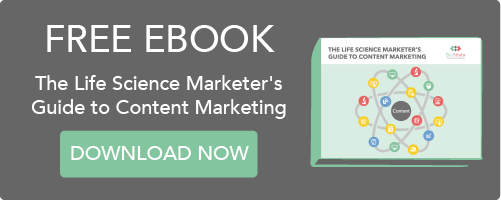
From the Oracle of Delphi to the witches of Macbeth, we humans have always had a penchant for soothsayers and clairvoyants. And how wonderful would it be to have the power of precognition in the world of business and marketing?
You’d know about consumer trends and fashions before they happen – giving you time to prepare and heroically lead the way. But seeing as soothsaying supplements have yet to hit the market, we’ll have to rely on good old-fashioned intuition, trend analysis and educated guesswork.
Here’s our take on what the future has in store for content marketing in the life science sector:
Future search engine robots will focus on quality over quantity.
According to Omar Kattan, Managing Director and CSO at Sandstorm Digital, "The future of SEO will rely less on technical signals and more on authority and social signals both of which require brands to produce more relevant, useful, entertaining and inspiring content." We agree, as each iteration of Google’s page ranking algorithm has moved towards rewarding content quality while minimising the effectiveness of quality-irreverent black hat SEO techniques like keyword stuffing and cloaking. This means that the future of content marketing strategy will have to reorient to focus on the value of content itself, as opposed to treating it as a mere tool for lead generation. We’re already seeing this trend start to have an influence, with some companies opting to produce fewer, longer blog posts, which are designed to go into depth on a topic and deliver significant value to readers.
Optimal content sharing platforms and mediums will be increasingly persona-specific.
We’re already seeing a tendency towards customisation and personalisation in the digital sphere. This means that people are increasingly able to tailor their newsfeeds into an overall social media experience that caters specifically to them. This trend will undoubtedly influence the future of content marketing. For instance, LinkedIn is already reigning supreme for B2B life science marketers looking to engage with personas in the scientific community, particularly those working in industry (e.g. pharma research and manufacturing, food technology, bioprocessing etc.). With platforms such as ResearchGate growing in popularity (and evolving in terms of how brands can use them to interact with their prospects), it’s likely that science-specific social media channels could start to become a more active part of the life science marketing toolkit.
In addition to specific social platforms, another key trend is the reemergence of podcasting and the ongoing shift towards video-based media. For this reason, it’s worth considering webinars and podcasts (both audio only and video). These mediums put a face and voice to your brand and personalises your company and its employees. Used correctly, they can also be a great way to educate potential customers, while building familiarity with your offering and positioning your company as a thought leader in your marketplace.
However, the content you produce, the medium you choose and the channels you select for content promotion will still depend greatly on your target buyer persona and their preferences when it comes to consuming information. For example, graduate scientists are ‘digital natives’ and are used to watching videos on their mobile device while on the move, while more senior execs might still be more likely to download longer-form content as pdfs and PowerPoint presentations.
Content will become more highly personalised and interactive.
As for the content itself, there’s a good chance it’ll continue on its trend towards increased personalisation and interactivity. According to a HubSpot survey that ran this year, consumers react far better to content on their social media feeds (which is necessarily personalised based on the platform’s algorithm) and to interactive content like quizzes and educational tools. As we look forward a decade or so, when the mobile revolution and integration with the Internet of Things is in full swing, consumers will have access to unprecedented levels of digital interactivity with their environment. When it comes to content marketing – and content creation – the onus will be on companies to use this newfound technology to provide potential customers with highly personalised and interactive content experiences, tailored to exactly what they are trying to achieve at that given moment in time.
How can you stay ahead of the curve?
For more tips on building an effective content marketing strategy that can stand the test of time, download your copy of The Life Science Marketer's Guide to Content Marketing and subscribe to our newsletter.





